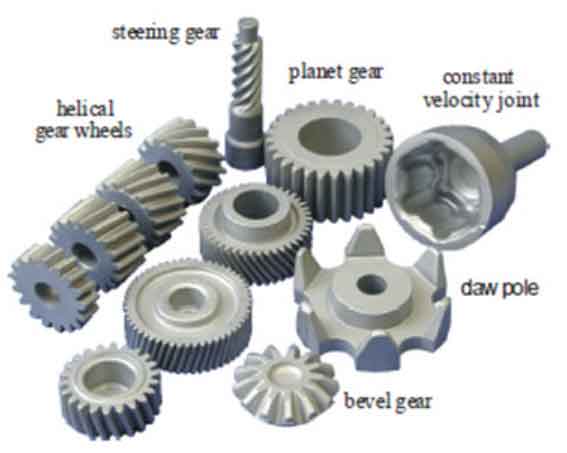Precision forging and traditional manufacturing methods are two approaches used in the production of metal components. While traditional manufacturing techniques have been widely used for many years, precision forging offers distinct advantages in terms of accuracy, strength, and efficiency. This comparative analysis explores the key differences between precision forging and traditional manufacturing and highlights the benefits of precision forging in modern manufacturing processes.

1.Material Utilization:
Precision Forging: Precision forging allows for near-net or net shape manufacturing, which minimizes material waste. By precisely shaping the metal into the desired form, precision forging reduces the amount of excess material that needs to be removed through subsequent machining processes. This results in significant material savings and cost efficiency.
Traditional Manufacturing: Traditional manufacturing methods often involve material removal processes, such as milling, turning, or grinding, which generate a significant amount of waste material. This can lead to higher material costs and environmental concerns associated with material disposal.
2.Component Strength and Durability:
Precision Forging: Precision forging enhances the mechanical properties of the metal components. The controlled deformation during the forging process refines the grain structure, resulting in improved strength, toughness, and fatigue resistance. Precision-forged components exhibit superior strength and durability, making them suitable for demanding applications that require high-performance characteristics.
Traditional Manufacturing: Traditional manufacturing methods may not provide the same level of grain refinement and structural integrity as precision forging. The material properties of components produced through traditional methods may vary, leading to potential inconsistencies in strength and durability.
3.Complexity of Component Geometry:
Precision Forging: Precision forging enables the production of components with complex geometries and intricate designs. The process allows for the accurate replication of intricate shapes, undercuts, and internal features, which are challenging to achieve through traditional manufacturing methods. This capability is particularly valuable in industries such as aerospace and automotive, where lightweight and aerodynamic designs are crucial.
Traditional Manufacturing: While traditional manufacturing methods can produce components with various geometries, complex shapes may require multiple operations and machining steps. This can increase manufacturing time, cost, and the potential for dimensional inaccuracies.
4.Cost Efficiency:
Precision Forging: Precision forging offers cost efficiency through material savings, reduced machining requirements, and improved production cycle times. Near-net or net shape manufacturing minimizes the need for extensive machining, resulting in reduced labor, energy, and tooling costs. The high production rates achievable with precision forging further contribute to cost efficiency.
Traditional Manufacturing: Traditional manufacturing methods may involve multiple machining steps and complex tooling requirements, which can increase production costs. The need for additional machining operations to achieve the desired component shape may also result in higher material waste and increased manufacturing time.
5.Manufacturing Efficiency and Throughput:
Precision Forging: Precision forging allows for high-speed production with consistent and repeatable results. The process can be automated, and the use of advanced equipment and control systems ensures precise control over the forging process parameters. These factors contribute to improved manufacturing efficiency, higher throughput, and reduced lead times.
Traditional Manufacturing: Traditional manufacturing methods may require multiple setups and adjustments during machining operations, leading to longer production times. The reliance on manual operations can introduce human error and inconsistency, impacting overall manufacturing efficiency.
Conclusion: Precision forging and traditional manufacturing methods have their respective advantages and considerations. While traditional manufacturing techniques have been widely used, precision forging offers superior material utilization, enhanced component strength, the ability to produce complex geometries, cost efficiency, and improved manufacturing efficiency. These advantages make precision forging a preferred choice for industries that demand high-performance components with exceptional accuracy and durability. As precision forging technology continues to advance, it is expected to play an increasingly significant role in modern manufacturing processes.
